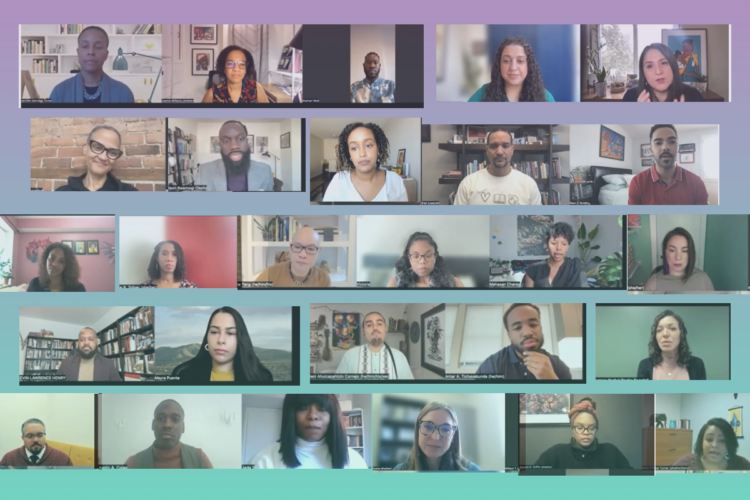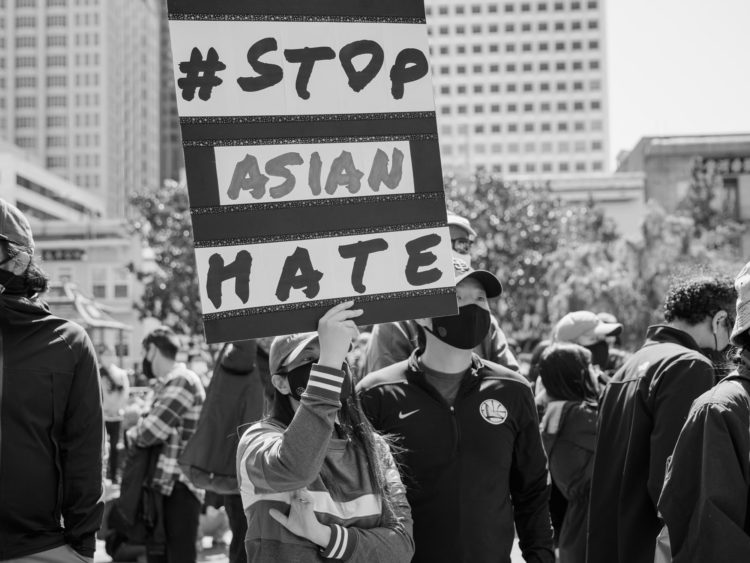Race is a key dimension of inequality in youth outcomes. For researchers who seek to study ways to reduce racial inequality, the starting point is a well-conceived research question grounded in a rich understanding of what racial categories mean and how racism is instantiated in systems, policies, institutions, and the like. With a rich conceptualization of race, studies to reduce racial inequality are more likely to develop knowledge of programs, policies, and practices that matter—approaches with the potential to yield change, rather than those too far removed from root causes to make a difference. Indeed, in six years of reviewing proposals for research on reducing inequality, we have seen applicants struggle to identify strategies that target systemic or institutional racism because they do not adequately consider how racism is embedded in those systems or institutions. To meet this challenge, a robust racial analysis can strengthen research to reduce inequality on the basis of race. In this post, Dina Okamoto, Professor of Sociology and Director of the Center for Research on Race and Ethnicity in Society at Indiana University, provides practical insights on what it means to study race, as well how one’s conceptualization of racial inequality undergirds research on responses to inequality more broadly. We hope that it inspires new thinking about an essential area of inquiry. – Adam Gamoran, 5.26.21
Given the renewed attention to racial violence and inequality over the past year, scholars are thinking about ways to more deeply engage with race and racism in their own research. Although race is a social construct with no biological basis, it remains one of the most powerful and persistent group boundaries in American life today. It can produce significant material and social impacts, and create stark disadvantages over generations. Race and racial boundaries can also generate communities with shared experiences and identities, which has implications for young people’s social experiences, perceptions, and behaviors.
What does it mean to develop a racial analysis? By definition, a racial analysis has race and racism as its central objects of examination. Race and racism can be investigated and analyzed in myriad ways, and one approach is to investigate how they are embedded within policies and practices. Scholars of economic inequality and education, for example, have focused on discriminatory governmental lending policies that contribute to racial differences in home-ownership, wealth, and access to higher-resourced schools. Race can also be understood and studied as a schema or ideology that infuses interactions within institutions, which can maintain, exacerbate, or reproduce inequalities. Scholars who study workplaces and the criminal justice system, for example, have documented the ways in which racial schemas shape hiring and promotion decisions, as well as perceptions of who is considered a criminal and who is deserving. Additionally, race can be examined as an expressive identity and a central part of one’s social experience. Developmental psychology has found that a strong and positive racial identity can be protective for minority youth. Such research agendas put race at the center.
Scholars who do not primarily engage with race and racism in their research need not entirely shift their research, but should seriously consider how to engage with race in their work moving forward—and learn from and collaborate with scholars who have such expertise. To engage with race more fully in our own research, we first need to reflect upon how we conceptualize, address, and locate race as a social construct, process, or category within that research.
Using Race as an Organizing Tool or Control Variable
For many researchers, race is not the central object of analysis. Instead, race is an organizing tool and category used as shorthand to describe groups and populations. It is a useful way to enumerate individuals and groups, and to describe variation in our samples. For example, scholars may analyze interview data and describe the racial composition of the study context (i.e., county, school, neighborhood) as well as its interviewees. Researchers often analyze large samples of survey data and use race to measure disparities in poverty, incarceration, and dropout rates. In general, race is a useful and important classification tool to describe and potentially interrogate differences.
Scholars who use quantitative methods often use race as a variable to be controlled in statistical models. We do this because race and racial differences may be related to a particular outcome we are interested in explaining, such as well-being, college completion, or civic engagement. If we hold race constant in our models, we can understand how other key variables work to produce an outcome.
What sometimes gets lost is the fact that racial differences exist at the baseline. We often do not stop to think about how race may be an important driving force for differences. Considering race as a central driver or fundamental social force can lead us to a racial analysis: an analysis that centers race and uses racial explanations to understand differences in group outcomes and experiences.
To engage with race more fully in our own research, we first need to reflect upon how we conceptualize, address, and locate race as a social construct, process, or category within that research.
No matter how we use race in our research—as an organizing tool, as a way to describe our samples or variations in outcomes, or as a control variable—we need to be mindful of the implications. Racial categories are not natural or fixed entities. They are socially constructed and can be quite limiting because they often mask diversity and heterogeneity within such categories, which can lead to erroneous understandings of social processes and outcomes. Thus, we need to think about the samples we collect (who is included and who is not), how we use racial categories to generalize about populations, and what it means to see variation in outcomes by race.
Unpacking Racial Categories
I came to understand the importance of unpacking racial categories through my own work on the Asian American population. Scholars had documented and analyzed the process of racialization as it applied to Asian Americans, and explored how Asians are classified into a unified racial category that can flatten differences and reproduce racial stereotypes, such as the “model minority.” I wanted to move beyond a focus on how Asians are racially classified to interrogate the Asian American category itself.
In my book, Redefining Race: Asian American Panethnicity and Shifting Ethnic Boundaries, I studied the emergence and construction of the Asian American category and identity. Before 1968, no category or consciousness linked Asians from different national origins. In fact, immigrants in the United States from China, Japan, Korea, India, and the Philippines did not readily form alliances or cooperate, nor did they see themselves as part of the same racial category. Instead, they built separate ethnic communities, depended on their own systems of social and economic support, and, at times, intentionally distinguished themselves from one another. The new pan-ethnic category and identity of “Asian American” emerged in the late 1960s, well before the federal government and its agencies adopted it as an official racial category. Asian activists built a political movement based on the shared experiences and struggles of Asian ethnic groups in the United States, developing the new pan-ethnic label and identity. Alongside national origin, linguistic, cultural, and religious differences, they constructed a narrative about the shared racialized histories of Asian ethnic groups—as cheap laborers and unassimilable foreigners without access to U.S. citizenship, land ownership, civil rights, or even entry into the United States.
I examined how Asian Americans developed and used this broader pan-ethnic label and category for political work and to build coalitions for social change. I also investigated how activists and leaders navigated the use of the term “Asian American” to advocate for the broader community, as it could detract from the significant disparities within and between various groups comprising Asian America. Instead of taking racial categories for granted or considering them natural, my work looks beneath the surface to understand the structures and processes that encouraged Asian Americans to develop and utilize this pan-ethnic label to protest anti-Asian racism and other forms of inequality. In this case, race and racial categories became my objects of analysis.
Developing a Racial Analysis
So how do we move toward a racial analysis in our own research with the goal of reducing inequalities? We need to dig deeper into racial constructs—and think about the implications of when and how we use those constructs. We need to further unpack the racial categories of Black, White, Asian, Latinx, and Native/Indigenous to understand the populations that comprise them. Using racial categories without scrutiny can mask the socially constructed nature of race and reify race as natural and biological. It can also gloss over the heterogeneity within such categories, producing inaccurate representations and understandings of a population. These inaccurate understandings, in turn, can lead to misinformation among policymakers, institutional stakeholders, and the larger public. At the same time, we need to recognize that racial categories remain durable because of the shared histories and contemporary experiences of race.
We need to develop a racial analysis that begins to center race and racism, and learn from scholars whose research agendas have been dedicated to the study of race, racism, and racial inequalities.
As scholars, we need to develop a racial analysis or explanation for the patterns and disparities that we see. If we find stark racial disparities in rates of incarceration, educational attainment, or civic engagement, for example, we may look toward the ways in which racial inequalities are embedded within institutions and systems. We cannot understand thorny contemporary issues without comprehending the broader history of racialization in the United States, and its ties to the history of citizenship, exclusion, and discrimination. Racism is not simply comprised of overt acts and implicit bias in everyday interactions, but is often built into institutions, policies, and the structures of our society. Race and racial hierarchies also shape informal norms and practices regarding who is deserving (and who is not), which can in turn influence policy outcomes. It even follows that race-neutral policies and practices can have implications for racial inequality and operate in non-neutral ways. As an example, historical tax and land use laws, as well as contemporary felony disenfranchisement and drug sentencing laws, are race-neutral in that they do not explicitly mention race but do have racially disparate impacts. These laws have systematically disadvantaged racial minorities and advantaged Whites in terms of wealth accumulation, employment, housing, and voting rights. All of these social facts often go unrecognized because of the lack of a racial analysis in research.
As we move toward a racial analysis, we also can consider how race intersects with other dimensions of difference or stratification, such as language, citizenship, immigrant status, and legal status, as well as gender, class, and sexual orientation. While some of these dimensions correlate, they do not always move together in the same direction. Scholars who use qualitative methods are often able to capture the dynamics of race and their intersections, as observations and interviews can highlight meaning-making and unfolding processes. For scholars who use quantitative methods, it can be more challenging to address the fact that race is dynamic rather than fixed. One approach would be to take into account the ways that race may have different effects on a particular set of outcomes, depending on context. For example, if a researcher is examining the racial composition of schools or neighborhoods on well-being or educational outcomes, they also could explore how effects may weaken or increase under certain conditions. Another approach would be to examine how the effects of race change over time. Either way, drawing upon qualitative work to understand the mechanisms and processes that may underlie these effects would help us to more fully understand how race and other dimensions of difference are operating to explain our outcomes of interest.
Some questions we can ask ourselves as we develop our research:
- What are the larger implications of using established racial categories in a study?
- How might we understand the variation within established racial categories?
- How can we construct more complex measures of race?
- How can we address the complexity of race in our research designs?
- How can we take into account the ways in which race is manifested in institutions and policies?
- What are the implications of not addressing racialized structures and institutions?
The current moment calls upon us to reorient our approaches to research. We need to develop a racial analysis that begins to center race and racism, and learn from scholars whose research agendas have been dedicated to the study of race, racism, and racial inequalities. Without engaging fully with race as a social construct, process, or category, we will overlook the fundamental ways that race and racial hierarchies constitute power structures that produce unequal outcomes and shape current and future experiences and trajectories. By grounding our studies in rich conceptualizations of the ways in which systems and practices sustain durable racial inequalities, our research can more effectively build, test, and increase understanding of pathways for change.






